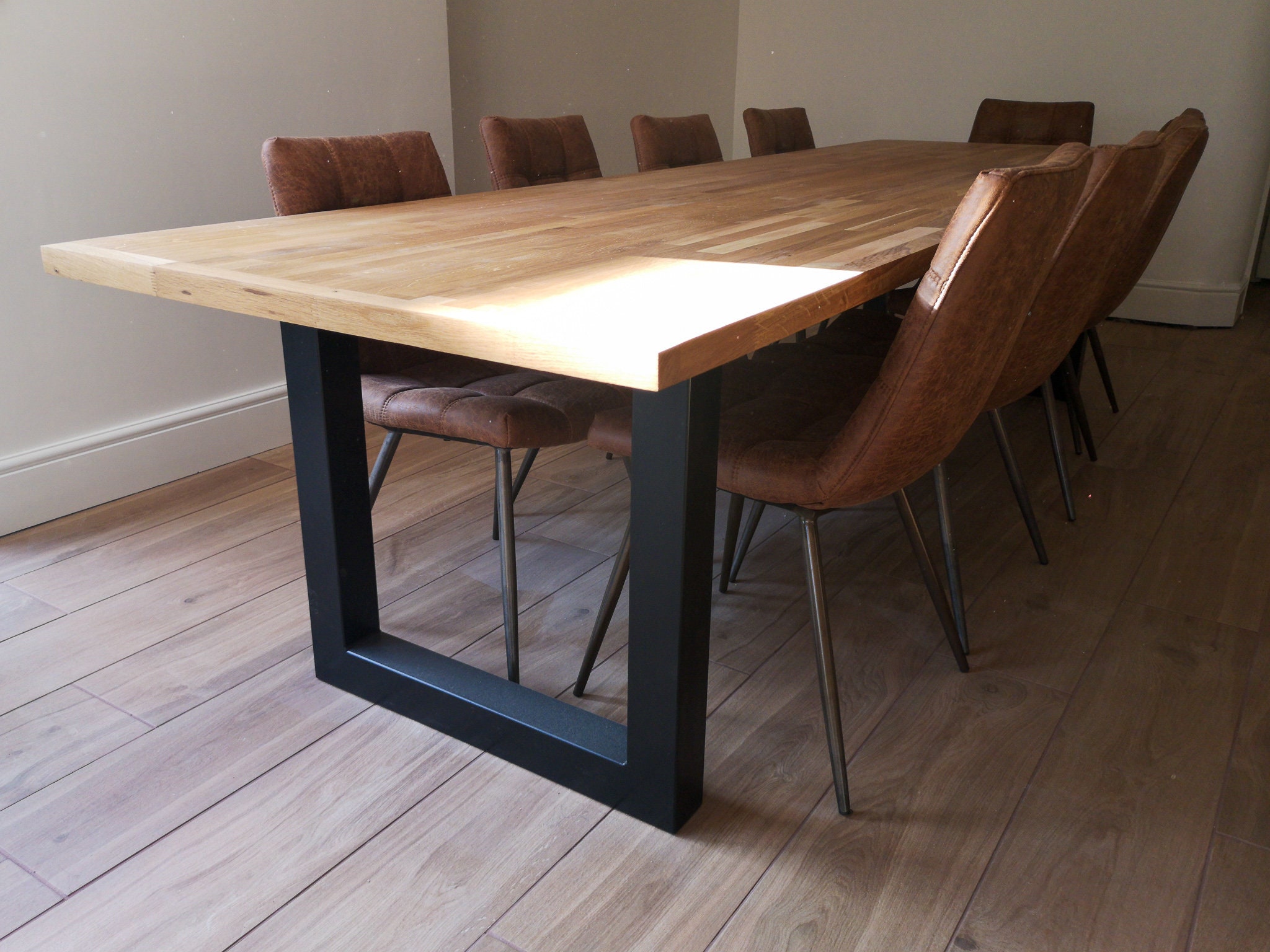A Detailed Look at Eating Table Leg Styles: Locating the Suitable Match
Choosing the appropriate table leg style is critical for both visual charm and practical capability. Conventional four legs offer classic elegance and stability, while the stand base offers raised legroom and a contemporary appearance. For those with bigger tables, trestle legs make certain durable assistance, whereas hairpin legs introduce a mid-century modern ambiance with their minimal style. The x-shaped legs blend modern design with enhanced security. Each of these choices brings unique benefits, making the choice a lot more than just a matter of preference. Check out even more to uncover which style completely matches your eating area and way of life.
Conventional 4 Legs
Among the numerous kinds of dining table leg styles, the conventional four-leg style remains a classic selection for many houses. 4 legs provide balanced support, making certain the table stays stable and qualified of birthing considerable weight (dining room table legs).
From a visual viewpoint, the standard four-leg layout can be easily adjusted to numerous indoor styles. Whether crafted from timber, metal, or a combination of products, these legs can be elaborately carved, sleek and minimalistic, or anything in between. Their adaptability permits them to enhance both rustic and contemporary setups seamlessly.
In addition, the uncomplicated framework of the four-leg design promotes convenience of movement and placement within an area. Unlike more complicated bases, this style minimizes blockages, offering ample legroom for restaurants. In summary, the traditional four-leg table leg style weds withstanding beauty with practical performance, making it an astute choice for those looking for both type and feature in their dining furniture.
Stand Base
Commonly celebrated for its classy and space-efficient design, the stand base is a prominent option to the traditional four-leg arrangement in dining table leg designs. This distinctive base normally features a single central column supporting the table top, which can differ in type, from ornately sculpted wood to streamlined, modern-day steel. Among the primary benefits of the stand base is its capability to optimize legroom and seating flexibility. Without edge legs, restaurants are afforded higher liberty of motion, making it an ideal option for round and oblong tables that advertise more intimate and inclusive events.
The main column itself uses a canvas for intricate layouts and creative expressions, adding an element of aesthetic interest beneath the table. In summary, the pedestal base combines capability with design, making it a refined and sensible choice for varied eating settings.
Trestle Legs
Trestle legs supply a robust and classic foundation for eating tables, identified by their straight cross-bracing and sturdy assistance site link beam of lights. Stemming from medieval times, this layout has actually advanced yet kept its important framework, making it a perennial fave in both traditional and modern setups. The central trestle beam, often supported by two or more upright messages, supplies exceptional security, permitting bigger table lengths without the requirement for additional legs.
A considerable benefit of trestle leg tables is the sufficient legroom they use. Unlike tables with four see this edge legs, the lack of obstructions at the table's edges gives unimpeded area for chairs and diners, improving convenience and ease of access. This makes trestle tables excellent for accommodating bigger celebrations, whether in a dining-room or a reception hall.
From rustic farmhouse to sleek modern designs, trestle legs can be personalized to fit private tastes. Their navigate here enduring charm and practical advantages make trestle legs an engaging option for those seeking both style and functionality in their eating table.
Barrette Legs

The appeal of hairpin legs depends on their simpleness and convenience - dining room table legs. Offered in a range of materials, including steel and brass, they can be completed in countless shades to match different interior designs. Whether matched with a rustic wood table top or a contemporary glass surface area, barrette legs easily mix functionality with a touch of classic charm
Toughness is an additional remarkable function of barrette legs. In spite of their fragile appearance, these legs are engineered to bear considerable weight, guaranteeing the table continues to be secure and secure. Additionally, they are relatively very easy to set up, making them a popular selection for do it yourself lovers and professional furniture makers alike.
X-Shaped Legs

Constructed from products such as steel, timber, or a mix of both, X-shaped legs can be customized to match different design preferences. Steel legs typically lend a smooth and commercial feel, perfect for loft-style houses and modern eating areas. On the other hand, wooden X-shaped legs offer a warmer, a lot more rustic charm, suitable for farmhouse or eclectic interiors. The flexibility in products enables homeowners to tailor their eating tables to better fit their total design plan.
Moreover, the design behind X-shaped legs ensures even weight circulation, decreasing the threat of wobbling and enhancing resilience. This makes them particularly fit for bigger eating tables that require additional support. Basically, X-shaped legs mix useful design with contemporary aesthetic appeals, making them an ageless choice for diverse dining environments.
Conclusion
An extensive understanding of eating table leg styles discloses the distinct characteristics and advantages of each layout. Trestle legs make certain robust assistance for bigger tables, and barrette legs introduce a mid-century modern-day visual.